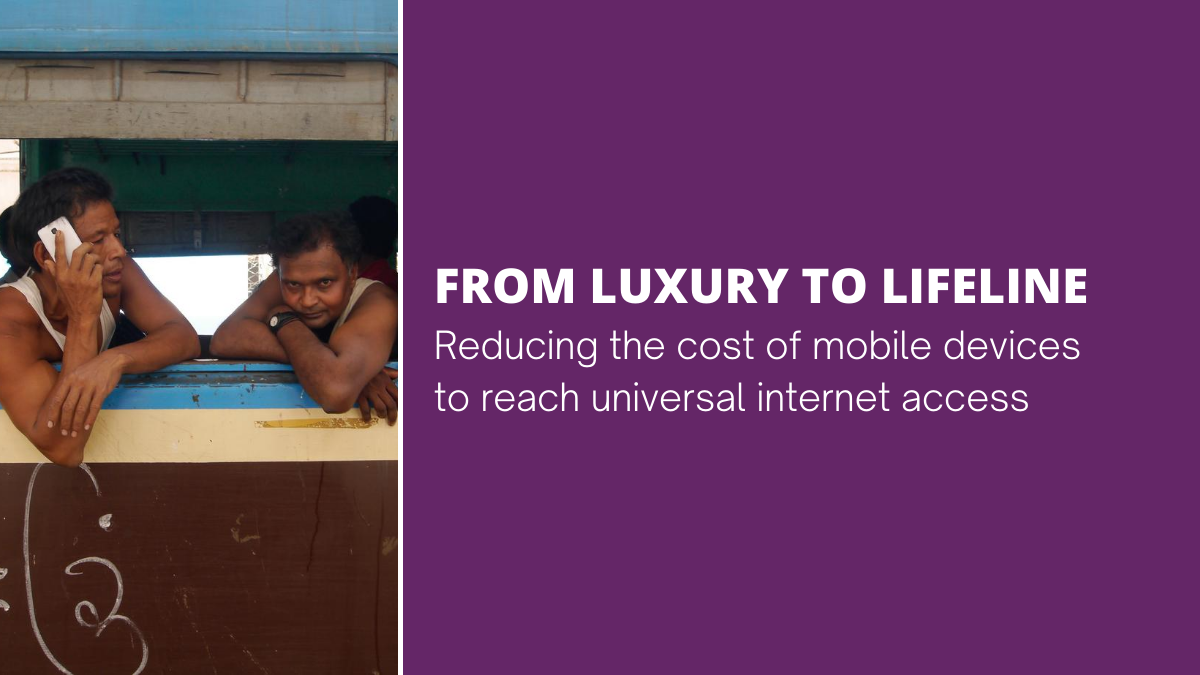
From luxury to lifeline: Reducing the cost of mobile devices to reach universal internet access
August 5, 2020
Mobile devices, once seen as consumer luxuries, are today the essential first step to getting online. But for billions of people around the world, they remain too expensive.
This report surveys the cost of devices in 70 countries with a combined population of over five billion people. In addition to price, we look at how affordable devices are by calculating their price relative to the average income of a country.
We found that nearly 2.5 billion people live in countries where the cost of the cheapest available smartphone is a quarter or more of the average monthly income. This is equal to the share of monthly income the average European household spends on housing and utilities.
There are stark divides between countries, with the average person in Sierra Leone having to save six months’ salary to buy the cheapest available smartphone. This compares with Botswana where a handset costs just 4% of average monthly income.
The report outlines policy tools that governments and multilateral bodies have at their disposal to reduce the cost of devices and help increase the number of people able to use the internet:
- Reduce taxes on low-cost devices: to bring down the purchase price of the cheapest devices and to encourage manufacturers and retailers to offer lower-priced products.
- Use universal service and access funds (USAFs) to subsidise devices for those least able to buy handsets.
- Support projects that help people spread the cost of devices, giving people access to credit and other financial tools so they do not need to pay the full cost of a device up front.
These policies can help lower the cost of devices and make the internet more accessible for billions more people.
Read the report to learn more and explore the data.
Other resources:
